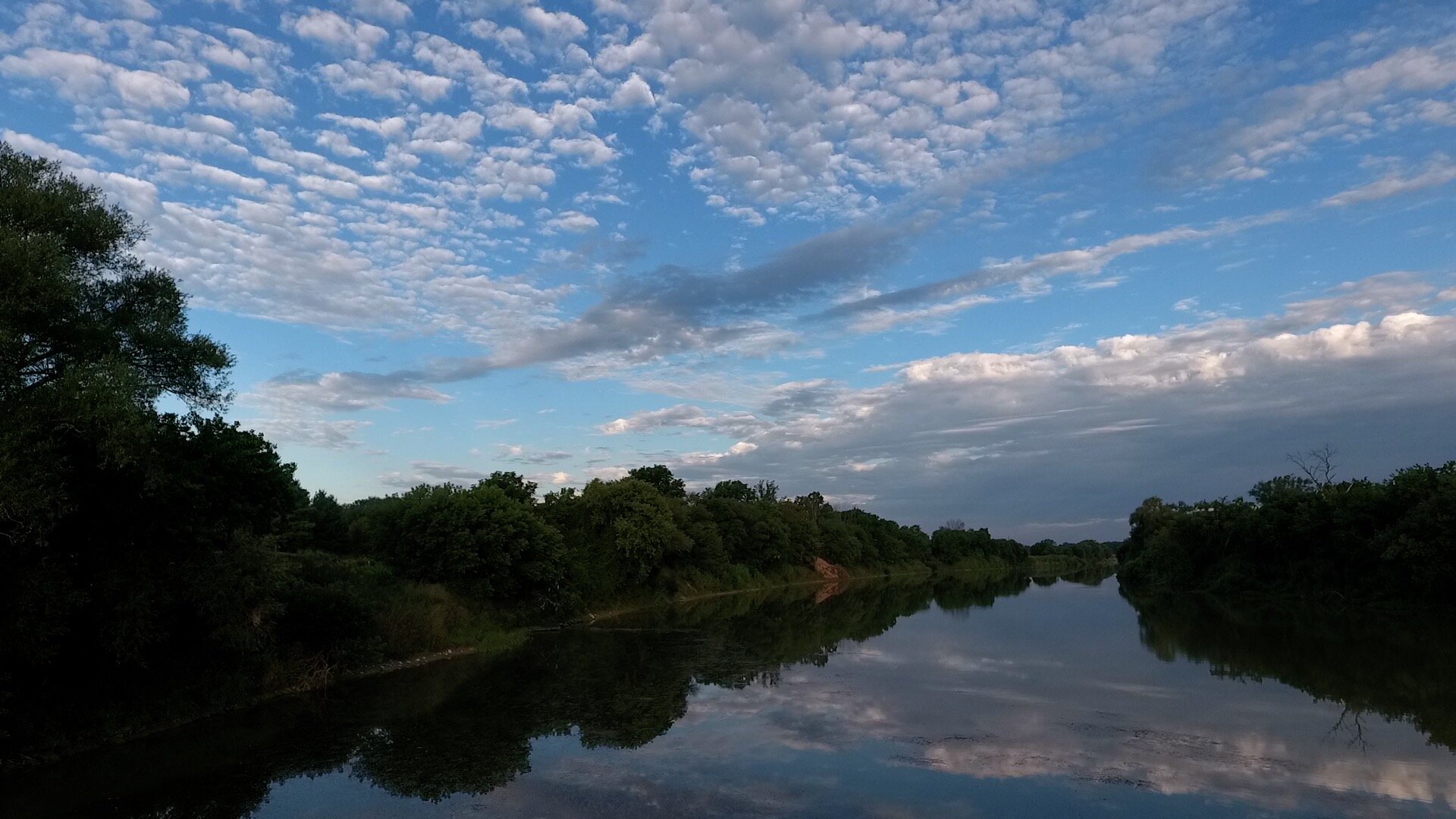
We are stewards.
Land Rights Statement.
(As adopted in Council November 4, 2006)
The Council of Chiefs of the Haudenosaunee, Grand River Territory, wish to affirm and clarify our land rights in the tract conferment by Governor Frederick Haldimand on October 25, 1784. In making this statement, the Council of Chiefs wants to make it clear that we hold certain land ethics and principles that must be respected in any agreements on land use or occupation. The Haudenosaunee, and its governing authority, have inherited the rights to land from time immemorial. Land is a birthright, essential to the expression of our culture.
With these land rights come specific responsibilities that have been defined by our law, from our Creation Story, the Original Instructions, the Kaianeren:kowa (Great Law of Peace) and Kariwiio (Good Message). Land is envisioned as Sewatokwa’tsherea’t, (the Dish with One Spoon); this means that we can all take from the land what we need to feed, house and care for our families, but we also must assure that the land remains healthy enough to provide for the coming generations. Land is meant to be shared among and by the people and with other parts of the web of life. It is not for personal empire building.
First and foremost is the concept that we are connected to the land in a spiritual way. The earth is our mother and she provides for our long-term well-being, provided that we continue to honour her and give thanks for what she has provided. We Haudenosaunee have upheld our tradition of giving thanks through ceremony, and in the cultural practices that manifest our beliefs, values, traditions and laws. Planting, cultivating, harvesting, gathering, hunting, and fishing also have spiritual aspects that must be respected and perpetuated if the land is to provide for our future generations, and the future generations of our neighbours. We are stewards. Our spiritual obligation is part of that stewardship.
Second, according to our law, the land is not private property that can be owned by any individual. In our worldview, land is a collective right. It is held in common, for the benefit of all. The land is actually a sacred trust, placed in our care, for the sake of coming generations. We must protect the land. We must draw strength and healing from the land. If an individual, family or clan has the exclusive right to use and occupy land, they also have a stewardship responsibility to respect and join in the community’s right to protect land from abuse.
We have a duty to utilize the land in certain ways that advance our Original Instructions. All must take responsibility for the health of our Mother.
Our ancestors faced overwhelming odds and relentless pressure to give up our lands. We all know that unscrupulous measures were employed to seduce our ancestors into “selling” the land. At other times, outright fraud took place, as was acknowledged in the Royal Proclamation of 1763. The agreements we recognize reflect an intention to share land, and to lease land, within the context of the Covenant Chain relationship that our nations maintain with the Crown.
Our wampum belts, treaty council documents and oral history inform us that we always retained the right to hunt, fish, and gather upon all of our lands. This reflects the spirit of sharing that we expect to continue and is another example of the Dish with One Spoon.
We seek justice in our long-standing land rights issues. We seek an accurate accounting of the use and investment of the funds held by the Crown on our behalf, and land transactions conducted by the Crown involving our lands. For nearly two hundred years our Chiefs have been asking for such accounting and justice. Generations of our elders have passed away with these matters unresolved. It is time to end the injustice.
Our faith in the Canadian people is strong, as we feel that the majority of Canadians also want to see justice on these matters. However, their elected representatives and public servants have failed to act effectively to address and resolve these matters. It is time to lift the cloud of denial and to wipe away the politics that darken the vision of the future. It is time we are heard clearly, and our cases should be addressed with utmost good faith and respect. We firmly believe that if we have respect and trust, we will find mutually agreeable solutions that will reflect our long-standing friendship.
We want the land that is ours. We are not interested in approving fraudulent dispossessions of the past. We are not interested in selling land. We want the Crown to keep its obligations to treaties, and ensure all Crown governments-federal, provincial and municipal-are partners in those obligations. We want an honourable relationship with Canada.
That relationship, however, must be based on the principles that were set in place when our original relationship with the Crown was created. That is the rule of law that we seek. It involves the first law of Canada-the law that Canada inherited from both France and Britain. It is the law of nations to respect the treaties, to not steal land, or take advantage of indigenous peoples by legal trickery. As the Supreme Court of Canada has frequently stated, where treaties are involved, the honour of the Crown is always at stake.
We seek to renew the existing relationship that we had with Crown prior to 1924. That relationship is symbolized by the Tehontatenentsonterontahkwa (“The thing by which they link arms”) also known as the Silver Covenant Chain of Peace and Friendship. Our ancestors met repeatedly to repolish that chain, to renew its commitments, to reaffirm our friendship and to make sure that the future generations could live in peace, and allow the land to provide its bounty for the well-being of all the people. The Covenant Chain symbolizes our treaty relationship, also symbolized by Tekani Teyothata’tye Kaswenta (Two Row Wampum), which affirms the inherent sovereignty and distinctness of our governments. An essential part of the relationship is our commitment to resolve matters through good-faith negotiation between our governments, including consultation on any plans, which might affect the other government or its people.
In any land issues, we want it understood that the following principles will govern any actions taken by the Haudenosaunee Council of Chiefs of the Grand River Territory:
The land is sacred to us. It defines our identities, belief system, languages and way of life.
We hold the aboriginal and treaty title to our lands collectively.
Our treaty relationship with the Crown is still alive and in force and directs our conduct in our relationship to Canada Within this relationship, the terms of the treaties continue to bind both our government and the Crown.
We require a careful accounting for the Crown’s dealing with our lands, and return of any lands that were improperly or illegally taken from our ancestors.
We require an accounting for the funds administered or held by the Crown for the Six Nations people, and restitution of any funds unaccounted for.
It is not only within the context of our treaty relationship with the Crown that we see justification for such accounting and restitution. Canadian and international law is clear on the right of the Haudenosaunee to see justice on these matters.
In any agreements with the Crown concerning land our goal is to promote and protect a viable economy for our people on our land-an economy that will be culturally appropriate, environmentally sustainable, and not injurious to our people and our neighbours.
Our fundamental approach is that Six Nations lands will come under the jurisdiction, management and control of Six Nations people. The federal and provincial governments must not impose jurisdictional, policing, taxation, and/or economic activities as part of the land rights settlement.
Our people, our laws, and our government have survived by being thoughtful, respectful, diligent and practical. In our relations with the Crown, and in any negotiations concerning land and the resolution of land-related issues, we will continue to apply those principles.
